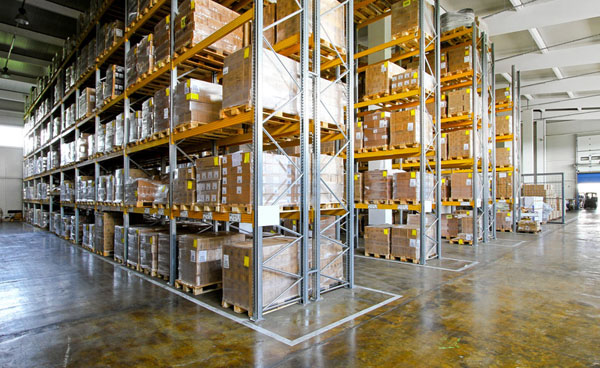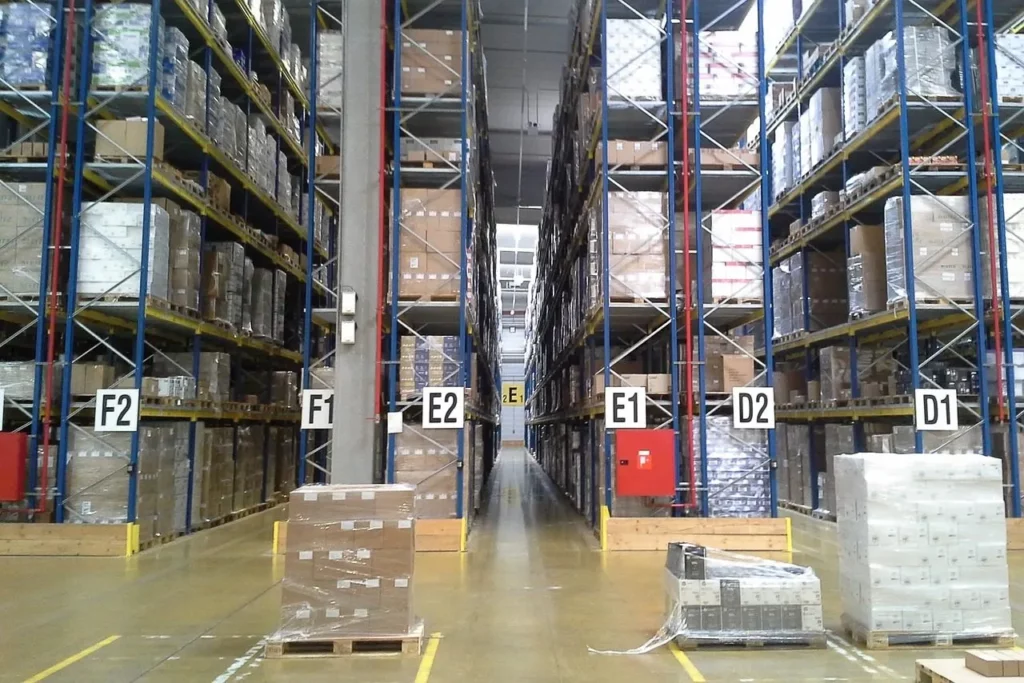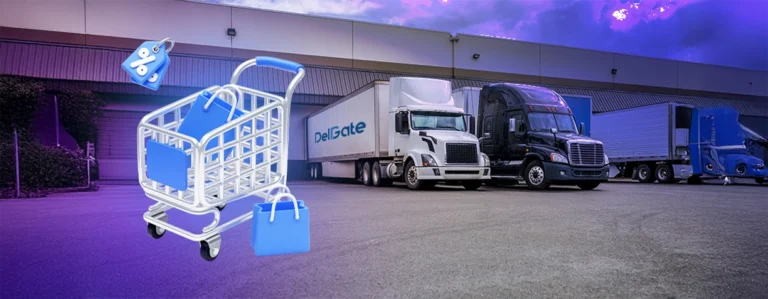Stock storage in 3pl logistics; this term fundamentally implies the administration and activities required for the getting, stockpiling, and development of merchandise. Some of the time alluded to as distribution center coordinated operations include complex preparation, association, and execution of many cycles to guarantee the smooth progression of the two items and data.
Running a distribution center and stockpiling framework is significant for any business as warehousing coordinated operations are essential for the production network. This fundamental fragment of the coordinated operations of the executive’s framework gives the capacity to complete merchandise as well as incorporates pressing and transportation of orders. Controlled coordinated operations capacity impacts the stock ensuring orders are followed through on time.
Table of Contents
The value of warehousing in a logistics system
Matching supply and demand
Dealing with a lot of stock cautiously will be financially valuable to both your business and clients. Keeping a very much followed stock will forestall postpones all together handling and late shipments. The coordinated operations cycles will cover distinguishing, classifying, and dispatching merchandise to their capacity area. This thusly guarantees that an overabundance of items can be appropriated to different places where expected to satisfy your client’s needs. Support of a predictable stock level will likewise make it more straightforward for your business to conjecture creation, benefit, and misfortune.
Centralizing goods
As all great are put away in a focal area the receipt, stockpiling, and dissemination of merchandise are a lot more straightforward. Transportation costs are frequently diminished, and cross-docking – a course of moving merchandise straightforwardly from getting the conveyance with practically zero stock – is productive and successful. Merchandise can be securely and safely put away in one site with the information that they’re accessible and perfectly positioned brilliantly. Streamlining space limits with high-thickness capacity frameworks will likewise assist with further developing stock administration.
Packing and processing
Distribution centers can likewise give choices to both packing and shipping services. Pressing materials like sacks, containers, and boxes can be made accessible, and a shipping bay will permit the prompt development of merchandise. At the point when this hardware is available your business has every one of the prerequisites expected to set aside time and cash. Effectiveness is likewise improved as recruiting extra workers won’t be fundamental.
Providing exceptional customer service
Following the situation of a client request, you’ll be positive about the information that very well may be conveyed inside cutoff times. Speed of conveyance is a truly significant calculated client selection of items. A distribution center makes convenient conveyance as a whole scope of merchandise can be securely put away at the necessary states of temperature and stickiness keeping away from any harm or deterioration. This expansion in the timeframe of realistic usability is an extra advantage to the purchaser.
As distribution centers are utilized to store merchandise for a period of time costs can stay stable. At the point when the request is high expansion rates and climatic circumstances can be kept low, guaranteeing purchasers can buy in enormous amounts at the most aggressive cost.
Getting financial assistance
A reinforced distribution center can be utilized as an influence for mentioning any extra monetary assistance. This kind of warehousing is authorized by the public authority to acknowledge imported merchandise for capacity until customs obligations are paid. Putting away merchandise to be sent out from a reinforced distribution center likewise assists with controlling expenses as customs obligations are paid relatively.
A monetary guide during stock storage in the 3pl logistics process will be given based on got merchandise and items put away anywhere nearby. These merchandise are completely safeguarded through an authorized protection framework, and that organization would pay any remuneration assuming the need emerged – limiting business risk.

Warehouse logistics benefits
Warehousing, logistics organizations, and stock storage in 3pl logistics remain forever inseparable. At the point when distribution center activities run as expected the framework encounters fewer issues and blunders which amplifies income. A concise synopsis of these advantages includes:
• Real-time inventory – realizing the amount of stock you possess and where it’s situated in the distribution center guarantees exactness
• A reduction in returns – sending the accurately chosen things the first time around will ensure that there is less merchandise returned
• Stock replenished automatically – at the point when stock levels get low computerized distribution center schedules will supplant and top off to forestall any unavailable circumstances
• Warehouse space is increased – less floor space for laborers will let loose a tremendous piece to streamline space limit
• Improved customer services – with stock recognizability, fewer picking blunders, and streamlined processes the presentation of your business will be improved
• Spot stocking – makers that produce occasional items will find a distribution center procedure inclined toward the horticultural area valuable as various stockrooms near key business sectors are utilized to diminish the transport season of new items during stock storage in 3pl logistics.

Warehouse management systems Canada
High-level distribution center administration frameworks – additionally alluded to as WMS in Canada – are a significant instrument to assist you with addressing the requirements of your stockroom. They involve a stock control framework, all distribution center coordinated operations, the executives understanding, and request satisfaction during stock storage in 3pl logistics. Many will offer versatile instruments to empower administrators and representatives to control the framework by cell phone. With this extra assistance and backing, you’ll have the option to significantly work on your current coordinated operations and satisfy any client needs

The importance of Stock storage in 3pl logistics chain
The stock storage in the 3pl logistics chain is a mind-boggling process including a progression of stages that should run impeccably flawlessly to guarantee that the merchandise shows up at its objective quickly and securely. One of those stages is capacity, which has a fundamental impact on the appropriation cycle.
Capacity isn’t just about taking care of the merchandise, here are a portion of the perspectives engaged with a decent warehousing administration:
• Goods reception.
• Safekeeping the merchandise, making them simple to access and deal with.
• Maintenance: Overseeing items, their well-being, and safeguarding.
• Inventory of the freight and accessible stock.
• Transport: Overseeing arrangement, bundling, and shipment to the objective.
Capacity has a fundamental impact on the production network given that it assists with ensuring great conveyance times and diminishing distribution center misfortunes, making it conceivable to offer better administrations, to possess a situation in front of contenders, and, eventually, to increment benefits.
Having a decent stockpiling framework is in this manner fundamental for extending a business. Consequently, the significance of knowing the various types of calculated stockpiling is to have the option to pick one that fits the particular requirements of every business and its objective market in stock storage in 3pl logistics.

Storage by location
Internal or covered storage
This sort of capacity offers more noteworthy security as it empowers the control of climatic factors, for example, lighting, temperature, or stickiness to keep up with the trustworthiness of the merchandise.
Read more: How to pike the best Shipping Company for Your e-commerce Store
External storage
This, then again, is open-air stockpiling where it is difficult to control ecological variables, making it ideal for loads that won’t be impacted by the climate. What it offers, be that as it may, is a reconnaissance of the merchandise in regions for the most part introduced in places deterred with security walls, and railings.
Read more about Demand Forecasting in 3PL Logistics
Storage by function in the logistics chain
Central storage
This sort of capacity is situated close to the creation plant, expecting to downplay the expense of merchandise transport. It ordinarily stores the vast majority of the stock and appropriates it to the different territorial distribution centers if these exist.
Regional storage
This sort of capacity has an essential area ensuring dissemination of the item in the most limited conceivable time. These are distribution centers coordinated to get enormous amounts of merchandise coming from the creation plants on trucks.
Storage in transit
These are distribution centers found mid-way between the territorial stockroom and the retail location. Here the thought is that the vehicle time is something like 24 hours. These are quick distribution centers, ready to hold the merchandise for a brief time frame and with a high turnover.
Temporary storage
These are spaces molded for a restricted measure of time to address stock issues in case of explicit interest.
Read more about: What are the key factors to the successful e-commerce order fulfillment process?
Free warehouse
This is the name given to the extra room for merchandise coming from imports or commodities. The free distribution center offers various tax reductions, considering that the freight isn’t liable to import obligations or interior income. The merchandise put away here are tax exempt both on entering and leaving the warehouse for their stock storage in the 3pl logistics process.

Types of stock or inventory in 3pl logistics
Prior to addressing the keys to stock administration, we will check out momentarily the ongoing various kinds of stock storage in 3pl logistics:
Types of stock from the functional perspective:
- Cycle stock: this is the supply of a distribution center to fulfill customary needs over a significant stretch of time.
- Safety stock: this is the stock to satisfy unforeseen needs or interests in extraordinary conditions that have brought on some issues (for instance, surprising postponements).
- Seasonal stock: this is the occasional stock for items with deals that increment pointedly at specific times (for instance, the run-of-the-mill Spanish sweet “turron” at Christmas time).
- Recovery stock: these are those items that can be reused part of the way or completely.
- Deadstock: this is the stock of out-of-date stock that can’t be reused and which should consequently be eliminated from the distribution center.
- Speculative stock: on the off chance that it is normal that the deals of a specific item will increment temporarily, the supply of that item is expanded before there is any expansion popular, and it is in this manner put away at a lower cost.
Read more: What is the delivery management?
Types of stock from the operational perspective:
- Optimal stock: the optimal stock level is the stock that offers us the most extreme productivity. Or on the other hand, rather, the stock keeps up with the harmony between a satisfactory reaction to requests and the most extreme productivity of capacity costs.
- Zero stock: it is how much stock is related to the In the nick of time (JIT) the executive’s framework, which is portrayed by serving on request, and in this manner limiting the stock of stock in the distribution center. Zero stock is normal for the auto area.
- Physical stock: the actual stock is how much stock is accessible out of the blue in the distribution center.
- Net stock: this is the aftereffect of taking away neglected requests from existing stock in the distribution center.
- Available stock: this is the consequence of adding to the stock or actual stock in the distribution center and the orders in the works to providers less the neglected interest.
Stock management variables
Stock management is the way of organizing stock flows in the warehouse.
It is exceptionally significant for the seriousness of organizations. It should be fundamentally centered around having a satisfactory degree of stock in the distribution center to capability satisfy client needs at an ideal expense for the organization.
These are the fundamental factors that affect the stock or inventory management of a warehouse:
- Planning and management of purchases.
- The desired quality of the service.
- The sales forecast.
- The product storage system: finding the ideal modern stockpiling answer for organizations might have an effect on stock administration and, in this manner, on the reasonability of the business. Streamlining the space in stockrooms and dissemination focuses assumes a key part.
- Supplier delivery times.
Inventory management methods
These are the fundamental stock or stock administration frameworks that coordinated operations organizations use:
FIFO (First in First Out) method:
During stock storage in 3pl logistics, with the FIFO stock administration framework, the principal merchandise to leave the distribution center racks will be the initial ones that entered it. It empowers the ideal stock revolution and is impeccably adjusted to the capacity of short-lived items.
A portion of the modern racking frameworks that are adjusted to this administration technique is the live stockpiling frameworks for beds and the drive-through conservative framework. The bed transport framework is additionally adjusted to this technique. To decide if this is a suitable technique for dealing with your distribution center stock, find the benefits of the FIFO framework.
LIFO (Last in, First Out) method:
With the LIFO stock administration technique, the last unit burdened to enter the distribution center will be the first to leave it. It is an ideal technique for durable items, that don’t terminate or lose esteem after some time. The stock is stacked accessibly on the racks, with simple admittance to it when expected without moving the remainder of the unit loads.
The opposition racking or drive-in-bed racking frameworks are ideal answers for applying the LIFO stock administration technique in the distribution center. The van framework offers a lot of flexibility and can likewise be applied in this stock administration framework. See more key perspectives about the LIFO framework.
ABC management method:
In the ABC stock administration technique, the stock is ordered into three classifications: A, B, and C.
• Category A: these are the results of the most noteworthy stock worth and which consequently require nearer observation. They ordinarily possess 20% of the stock. The control of this stock is indispensable to stay away from stock consumption and every one of the issues related to this.
For the most part, these items involve the least places of more straightforward access on the modern racking.
• Category B: As per the ABC executive’s method, this stock requires less control by the organization, as it pivots less, so the stock is ordinarily refreshed in clusters, not by units. It addresses around 30% of distribution center stock.
It is put at a middle-of-the-road level on the racking or in one less focal region of the distribution center.
• Category C: these are the things that pivot the least and can address up to half of the stock. This stock is easy to control since it scarcely pivots.
For the most part, it is recharged when it leaves the distribution center. It typically possesses the most noteworthy pieces of the racking or other less focal region of the distribution center.
Just In Time (JIT) model:
Any association that is overseen by the in-the-nick-of-time (JIT) stock administration model has a perfectly measured proportion of unrefined components for every snapshot of the creation cycle, with negligible capacity needs. It requires the exceptionally severe association to stay away from postponements or cause stock consumption. The auto area is the clearest illustration of this.
Wilson’s model or optimal order model:
Wilson’s model for stock administration decides the volume or amount of the request to be set, to streamline the stock administration framework. It is determined when and in what amount requesting the stocks is fundamental. The numerical equation considers the yearly interest for the unrefined substance, the expense of the request, and the expense of capacity.
Warehouse stock management costs:
A variable to be taken into cautious thought in distribution center stock storage in 3pl logistics or stock administration is the expense of dealing with the stock to the organization, which will extraordinarily influence the return.
There are 4 fundamental sorts of stock expenses:
Purchasing or acquisition cost:
This is basically the sum paid to providers for each request made in stock storage in 3pl logistics. For the most part, this sum will be diminished on the off chance that the amount of merchandise is more noteworthy, and will increment assuming few requests are made.
Cost of making the order:
This classification incorporates the authoritative and the executives’ expenses of each request made by the organization.
Stock depletion cost:
This cost should incorporate incomes not produced for not having had the option to fulfill a client’s need, however, may likewise suggest different kinds of backhanded costs that influence an organization’s believability and expected future lost orders.
Stock maintenance cost
The simple reality of having items in stock in the distribution center produces an expense for organizations which will make it important to incorporate staff costs, distribution center administration framework costs, capacity framework establishment costs, the rental or acquisition of the distribution center and its month-to-month costs, deteriorations and protection and the conceivable devaluation of put away stock.
All in all, distribution center stock administration is a differentiator in an association’s presentation and there are many variables to consider while choosing how to deal with the progression of merchandise: the sort of stock for stock storage in 3pl logistics, assets to control it, arranging and determining of buys, relationship with providers and the stockpiling limit of the offices.





